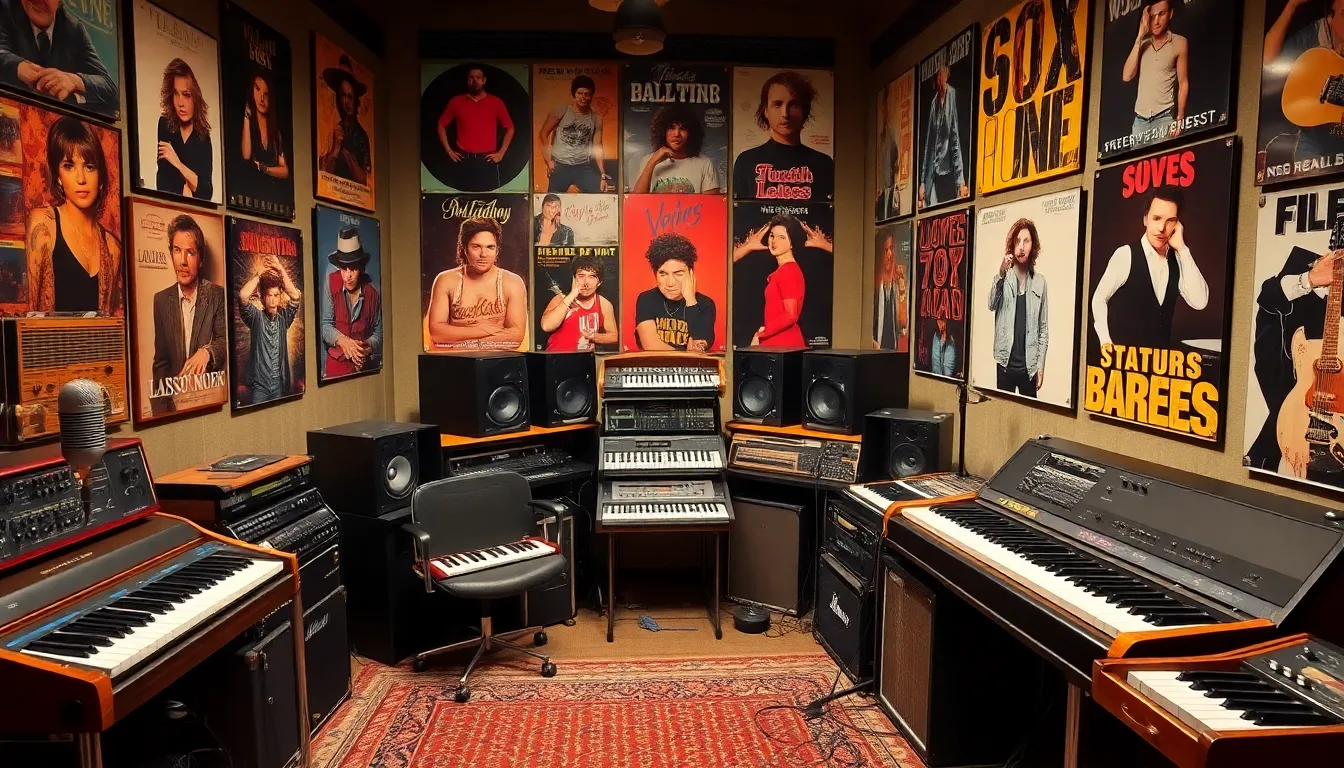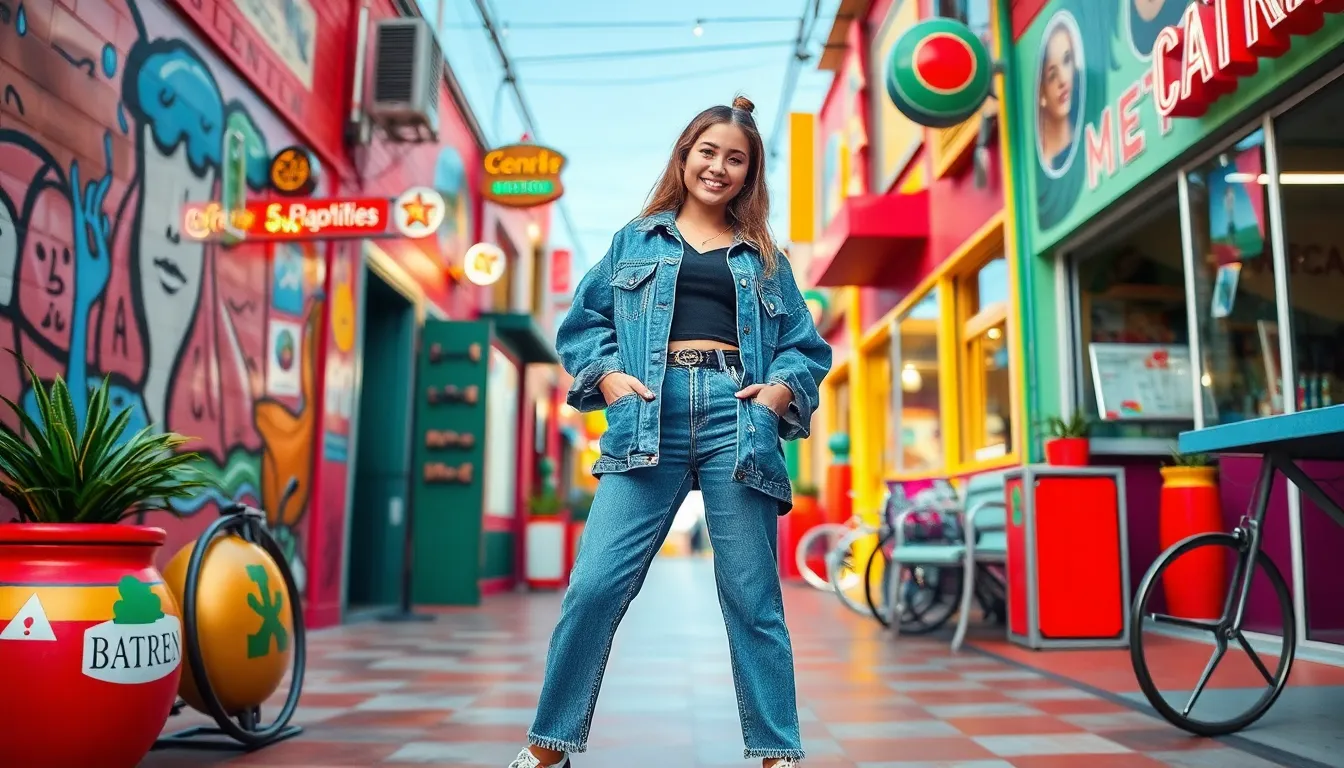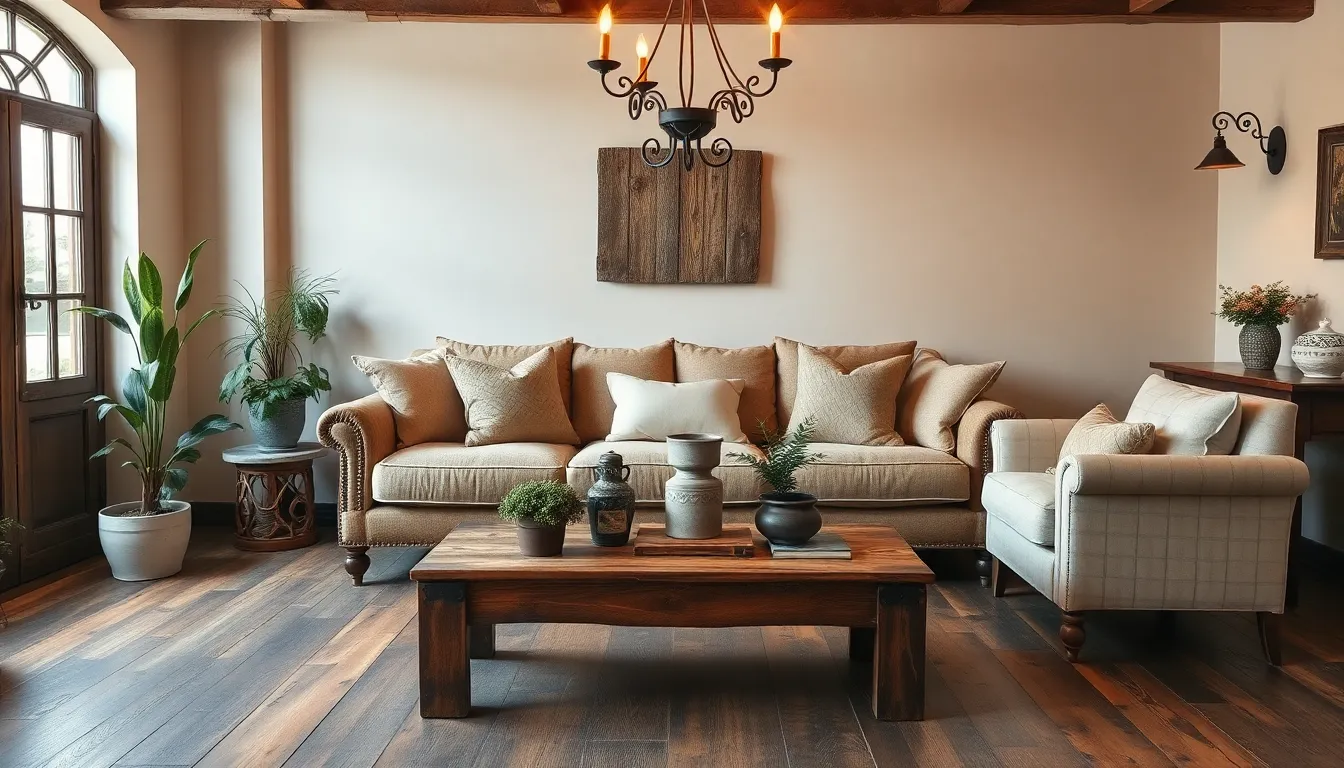Retro influences have a unique way of weaving nostalgia into contemporary culture. From fashion to music and design, the past resurfaces, sparking creativity and inspiring new trends. This revival isn’t just about mimicking styles; it’s a celebration of the eras that shaped today’s aesthetics.
As people seek comfort in familiar styles, retro influences offer a sense of connection to history. Whether it’s the vibrant colors of the 80s or the minimalist vibes of the 90s, these elements resonate with both younger generations and those who experienced them firsthand. Exploring these influences reveals how they not only reflect personal taste but also societal shifts, making them a fascinating topic in today’s creative landscape.
Table of Contents
ToggleOverview of Retro Influences
Retro influences shape contemporary culture through various channels, including fashion, music, and design. Nostalgia plays a pivotal role in this revival, driving interest in past eras. Designers and artists draw inspiration from distinct time periods, incorporating iconic styles into modern creations.
Fashion Trends
Fashion reflects retro influences with vibrant colors and patterns reminiscent of the 80s and minimalist aesthetics of the 90s. Examples include high-waisted jeans, oversized jackets, and statement accessories. Brands often reissue classic designs, appealing to nostalgic consumers while attracting newer audiences.
Music Resurgence
Music channels retro influences by revisiting classic genres and incorporating vintage sounds. Contemporary artists sample tracks from the past, blending them with modern production techniques. Vinyl records and cassette tapes have seen a resurgence, highlighting the tactile experience of music consumption.
Design Aesthetics
Design disciplines borrow elements from retro styles, merging them with current trends. Interior design incorporates vintage furniture, retro color palettes, and nostalgic decor, creating inviting environments. Graphic design frequently utilizes retro typography and bold visuals, evoking memories of earlier decades.
Cultural Festivals
Cultural festivals celebrate retro influences, showcasing vintage themes and performances. Events like retro-themed parties or music festivals often feature acts reminiscent of past eras, providing communal experiences that resonate with attendees. Such gatherings foster connections between generations, reinforcing the significance of retro in modern society.
Impact on Music

Retro influences significantly shape contemporary music, with artists drawing inspiration from past decades to create new sounds. This blend of old and new resonates with audiences, creating a rich tapestry of musical expression.
Evolution of Genres
Genres evolve by integrating retro elements. Pop and rock music incorporate 70s disco, while hip-hop frequently samples 90s beats. Additionally, electronic music incorporates sounds reminiscent of synth-pop and new wave. These genre fusions appeal to diverse audiences, bridging gaps between generations and expanding creative boundaries.
Notable Artists and Albums
Numerous artists honor retro influences in their work.
- Dua Lipa: Her album Future Nostalgia channels disco and funk sounds from the late 70s and early 80s, reviving dance music’s iconic elements.
- Lana Del Rey: She draws from the melancholic vibes of the 60s and 70s, blending cinematic elements with nostalgic themes.
- The Weeknd: His recent projects reflect 80s synth-pop, creating a soundscape that echoes past musical aesthetics while maintaining modern appeal.
These artists not only pay homage to earlier styles but also innovate within those frameworks, leading to fresh interpretations that captivate contemporary listeners.
Influence on Fashion
Retro influences significantly impact contemporary fashion, creating a bridge between past and present styles. Current trends are often a celebration of nostalgic aesthetics, drawing inspiration from previous decades.
Iconic Styles and Trends
Iconic styles from the past shape today’s fashion choices and reflect the cultural significance of each era.
- High-waisted jeans: Popular in the 80s and 90s, these jeans return as a staple in modern wardrobes, appealing to a wide demographic.
- Oversized jackets: Originating from 90s grunge and 80s street style, oversized jackets add a relaxed vibe while providing versatility.
- Statement accessories: Items like chunky necklaces and bold sunglasses evoke memories of past fashion, enriching contemporary looks.
These elements contribute to an enduring appeal, allowing consumers to merge nostalgia with current trends.
Modern Interpretations
Modern interpretations of retro fashion often blend vintage styles with innovative designs, appealing to a broad range of tastes.
- Updated silhouettes: Designers reinterpret classic cuts, offering tailored options that fit today’s body types while retaining vintage charm.
- Sustainable practices: Many brands incorporate eco-friendly materials and processes, enhancing the retro-inspired focus on individuality and self-expression.
- Color palettes: Bright colors and bold patterns reminiscent of the 70s and 80s appear in contemporary collections, rejuvenating current seasonal trends.
These modern iterations engage not just nostalgia but also align with contemporary values, making retro influences relevant in today’s fashion landscape.
Retro Influences in Art
Retro influences permeate various art forms, drawing from historical styles and movements. Artists reimagine past aesthetics, resulting in vibrant, multifaceted expressions that resonate widely.
Key Movements and Artists
- Pop Art: This movement emerged in the 1950s and 60s, embracing mass culture and commercial imagery. Artists like Andy Warhol and Roy Lichtenstein incorporated elements from advertising, comic books, and consumer products, blending high and low culture.
- Art Deco: Originating in the 1920s, Art Deco combines luxury with modern materials. Artists and designers such as Tamara de Lempicka and Erté utilized geometric shapes and bold colors, influencing contemporary design.
- Psychedelic Art: The 1960s counterculture birthed psychedelic art, characterized by vibrant colors and surreal imagery. Artists like Peter Max and Victor Moscoso embodied the spirit of the era, inspiring modern graphic design and visual arts.
- Street Art: Originating from graffiti culture, contemporary street artists like Banksy draw inspiration from retro aesthetics, blending social commentary with nostalgic visuals, which elevates urban environments.
- Retro Minimalism: This movement combines clean lines with retro color palettes reminiscent of the 1970s and 80s. Artists like Ellsworth Kelly and Donald Judd reflect simplicity while evoking nostalgia through their work.
Cultural Significance
Retro influences in art evoke nostalgia, bridging generational divides. They connect contemporary audiences with historical contexts, fostering appreciation for past cultures. The embrace of retro aesthetics in modern art reflects societal values, encouraging dialogue about identity and memory. By blending classic and contemporary elements, these artworks foster resilience and innovation, reinforcing their place in today’s cultural landscape.
Retro influences continue to shape contemporary culture in profound ways. They serve as a bridge connecting past experiences with modern expressions. As nostalgia weaves through fashion music design and art, it creates a rich tapestry that resonates with diverse audiences.
The revival of iconic styles and sounds not only honors history but also encourages innovation. By blending vintage elements with contemporary practices, creators are redefining aesthetics for today’s world. This ongoing dialogue between eras fosters a deeper appreciation for cultural heritage while inspiring new generations.
Ultimately retro influences remind us of the timelessness of creativity and the enduring power of nostalgia in shaping identity and memory.




